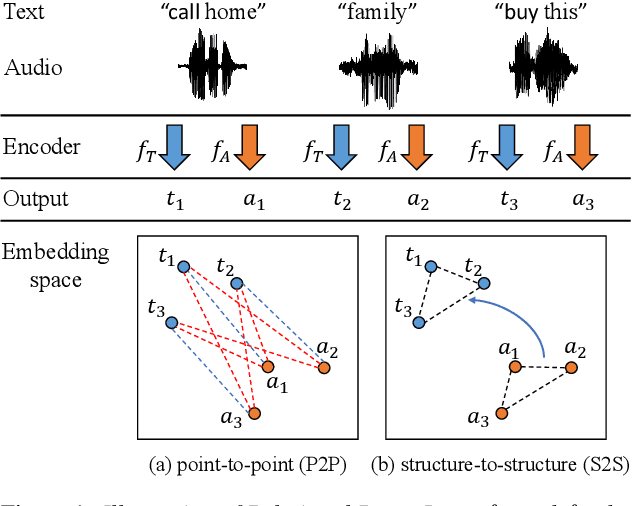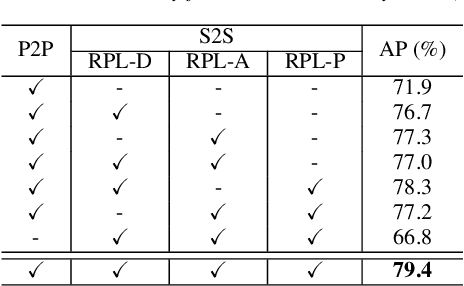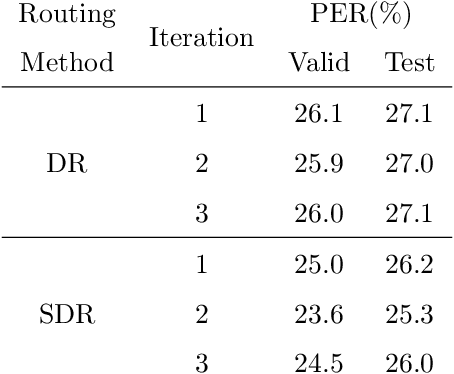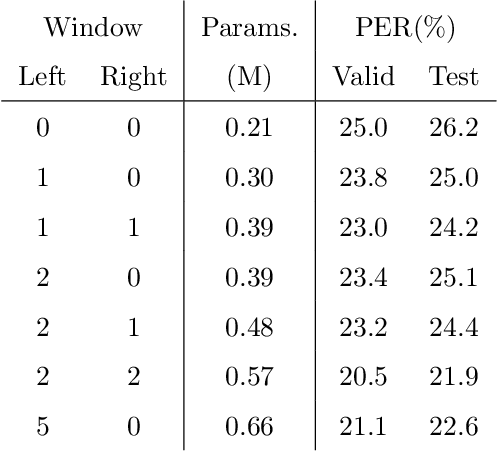Chang Woo Han
Adversarial Deep Metric Learning for Cross-Modal Audio-Text Alignment in Open-Vocabulary Keyword Spotting
May 22, 2025Abstract:For text enrollment-based open-vocabulary keyword spotting (KWS), acoustic and text embeddings are typically compared at either the phoneme or utterance level. To facilitate this, we optimize acoustic and text encoders using deep metric learning (DML), enabling direct comparison of multi-modal embeddings in a shared embedding space. However, the inherent heterogeneity between audio and text modalities presents a significant challenge. To address this, we propose Modality Adversarial Learning (MAL), which reduces the domain gap in heterogeneous modality representations. Specifically, we train a modality classifier adversarially to encourage both encoders to generate modality-invariant embeddings. Additionally, we apply DML to achieve phoneme-level alignment between audio and text, and conduct comprehensive comparisons across various DML objectives. Experiments on the Wall Street Journal (WSJ) and LibriPhrase datasets demonstrate the effectiveness of the proposed approach.
Relational Proxy Loss for Audio-Text based Keyword Spotting
Jun 08, 2024



Abstract:In recent years, there has been an increasing focus on user convenience, leading to increased interest in text-based keyword enrollment systems for keyword spotting (KWS). Since the system utilizes text input during the enrollment phase and audio input during actual usage, we call this task audio-text based KWS. To enable this task, both acoustic and text encoders are typically trained using deep metric learning loss functions, such as triplet- and proxy-based losses. This study aims to improve existing methods by leveraging the structural relations within acoustic embeddings and within text embeddings. Unlike previous studies that only compare acoustic and text embeddings on a point-to-point basis, our approach focuses on the relational structures within the embedding space by introducing the concept of Relational Proxy Loss (RPL). By incorporating RPL, we demonstrated improved performance on the Wall Street Journal (WSJ) corpus.
Sequential Routing Framework: Fully Capsule Network-based Speech Recognition
Jul 23, 2020



Abstract:Capsule networks (CapsNets) have recently gotten attention as alternatives for convolutional neural networks (CNNs) with their greater hierarchical representation capabilities. In this paper, we introduce the sequential routing framework (SRF) which we believe is the first method to adapt a CapsNet-only structure to sequence-to-sequence recognition. In SRF, input sequences are capsulized then sliced by the window size. Each sliced window is classified to a label at the corresponding time through iterative routing mechanisms. Afterwards, training losses are computed using connectionist temporal classification (CTC). During routing, two kinds of information, learnable weights and iteration outputs are shared across the slices. By sharing the information, the required parameter numbers can be controlled by the given window size regardless of the length of sequences. Moreover, the method can minimize decoding speed degradation caused by the routing iterations since it can operate in a non-iterative manner at inference time without dropping accuracy. We empirically proved the validity of our method by performing phoneme sequence recognition tasks on the TIMIT corpus. The proposed method attains an 82.6% phoneme recognition rate. It is 0.8% more accurate than that of CNN-based CTC networks and on par with that of recurrent neural network transducers (RNN-Ts). Even more, the method requires less than half the parameters compared to the two architectures.
 Add to Chrome
Add to Chrome Add to Firefox
Add to Firefox Add to Edge
Add to Edge